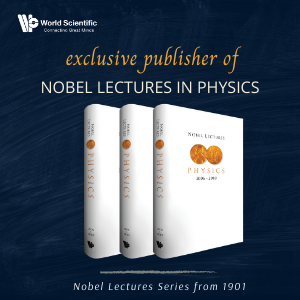System Upgrade on Tue, May 28th, 2024 at 2am (EDT)
Existing users will be able to log into the site and access content. However, E-commerce and registration of new users may not be available for up to 12 hours.For online purchase, please visit us again. Contact us at customercare@wspc.com for any enquiries.
The aim of this book is to provide the fundamentals of statistical physics and its application to condensed matter. The combination of statistical mechanics and quantum mechanics has provided an understanding of properties of matter leading to spectacular technological innovations and discoveries in condensed matter which have radically changed our daily life.
The book gives the steps to follow to understand fundamental theories and to apply these to real materials.
Sample Chapter(s)
Chapter 1: Basic Concepts and Tools in Statistical Physics (229 KB)
Contents:
- Fundamentals of Statistical Physics:
- Basic Concepts and Tools in Statistical Physics
- Isolated Systems: Micro-Canonical Description
- Systems at a Constant Temperature: Canonical Description
- Open Systems at Constant Temperature: Grand-Canonical Description
- Free Fermi Gas
- Free Boson Gas
- Systems of Interacting Particles: Method of Second Quantization
- Application to Condensed Matter:
- Symmetry in Crystalline Solids
- Interacting Atoms in Crystals: Phonons
- Systems of Interacting Electrons — Fermi Liquids
- Electrons in Crystalline Solids: Energy Bands
- Systems of Interacting Spins: Magnons
- Systems of Interacting Spins: Phase Transitions
- Superconductivity
- Transport in Metals and Semiconductors
- Solutions of Problems:
- Solutions of Problems of Part 1
- Solutions of Problems of Part 2
- Appendices:
- Appendix A: Mathematical Complements and Table of Constants
- Appendix B: Sommerfeld's Expansion at Low Temperatures
- Appendix C: Origin of the Heisenberg Model
- Appendix D: Hubbard Model: Superexchange
- Appendix E: Kosterlitz-Thouless Phase Transition
- Appendix F: Low- and High-Temperature Expansions of the Ising Model
Readership: For students, academics and researchers interested in statistical physics.
























